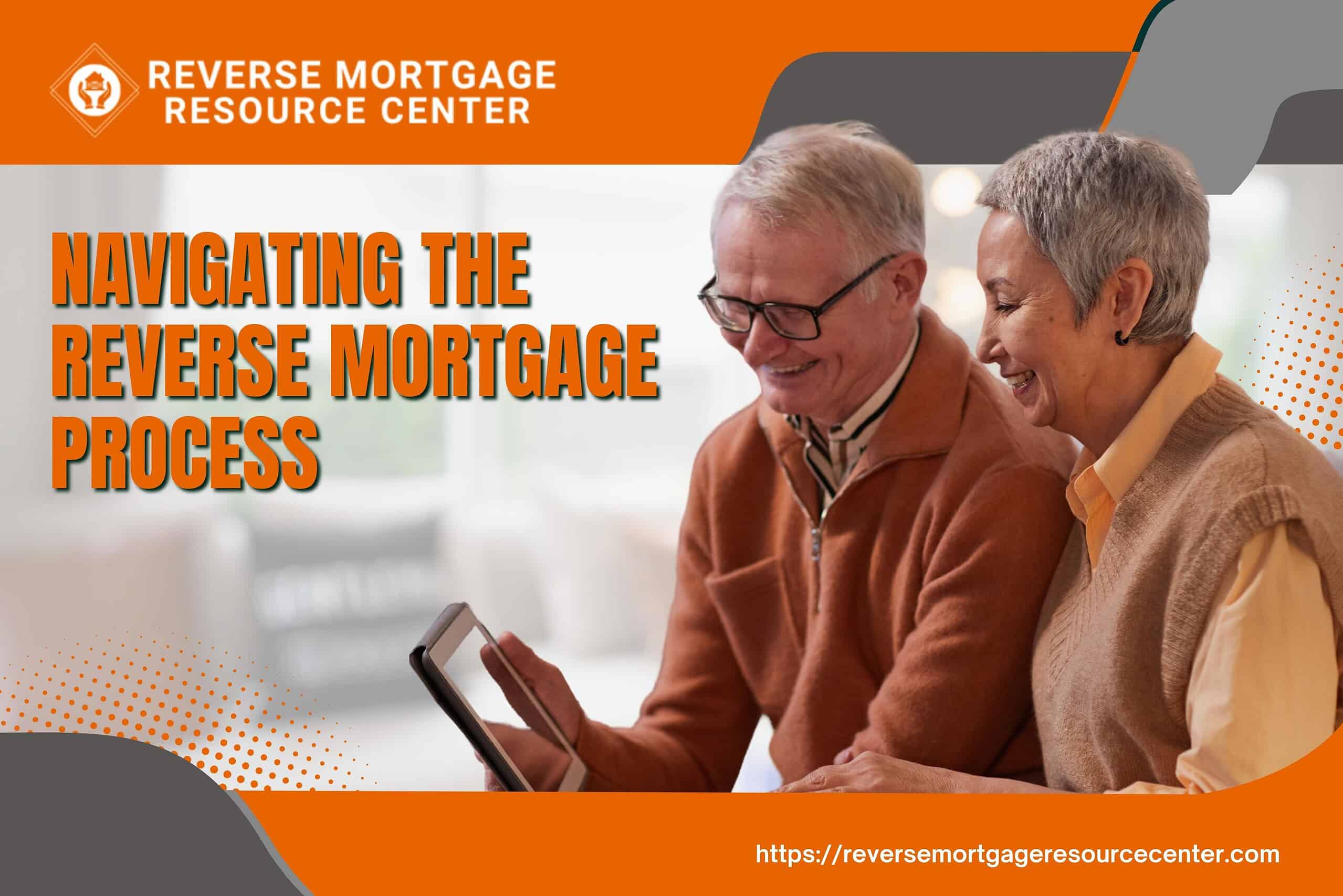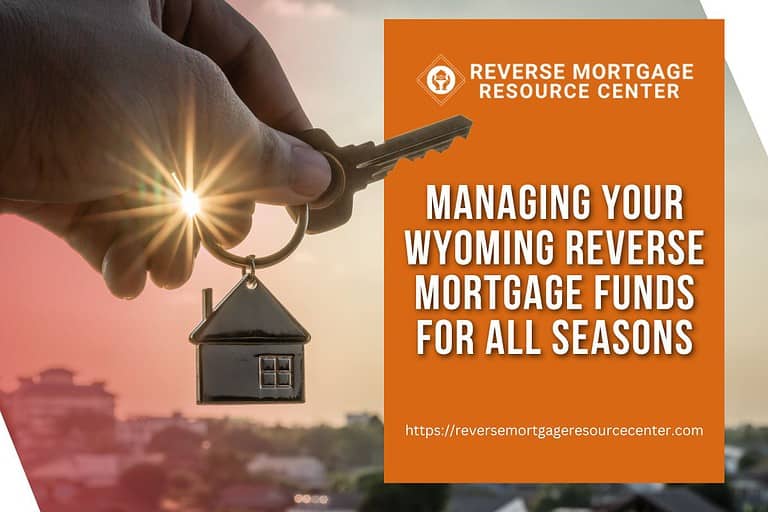Navigating the Reverse Mortgage Process
In today’s economic landscape, many seniors face financial challenges as they navigate retirement. With the cost of living rising and pension funds sometimes falling short, older adults often find themselves seeking alternative means to bolster their financial security. One such avenue worth exploring is the reverse mortgage. However, understanding and navigating the reverse mortgage process can be daunting. In this comprehensive guide, we’ll break down the steps involved in applying for and obtaining a reverse mortgage, offering valuable insights and tips to help seniors make informed decisions.
Understanding Reverse Mortgages: What Seniors Need to Know
Before diving into the application process, it’s crucial for seniors to have a clear understanding of what a reverse mortgage entails. Essentially, a reverse mortgage is a type of loan available to homeowners aged 62 or older that allows them to convert part of their home equity into readily accessible funds. Unlike traditional mortgages, reverse mortgages do not require monthly payments; instead, the loan is repaid when the borrower moves out of the home or passes away, often through the sale of the home.
Reverse mortgages offer several potential benefits for seniors, including:
- Supplement income: Reverse mortgages provide seniors with a source of funds to supplement their income, allowing them to tap into their home equity to cover expenses such as healthcare costs, home repairs, or daily living expenses.
- No monthly payments: Unlike traditional mortgages, reverse mortgages do not require monthly payments. Instead, the loan balance accrues over time and is repaid when the home is sold or the borrower moves out.
- Flexible disbursement options: Reverse mortgage borrowers have the option to receive their loan proceeds as a lump sum, a line of credit, set monthly disbursements, or a combination of these options, providing flexibility to meet their individual financial needs.
However, it’s essential to recognize that reverse mortgages also come with potential risks and drawbacks, including:
- Accumulating interest: Because reverse mortgage borrowers are not required to make monthly payments, interest accrues on the loan balance over time, potentially reducing the equity remaining in the home.
- Loan fees and closing costs: Reverse mortgages typically come with upfront fees and closing costs, including mortgage insurance premiums, origination fees, and appraisal fees, which can eat into the amount of cash available to the borrower.
- Impact on heirs: When the borrower passes away or moves out of the home, the reverse mortgage loan becomes due, and the home may need to be sold to repay the loan balance, potentially reducing the inheritance available to heirs.
Step 1: Educate Yourself
The first step in navigating the reverse mortgage process is to educate yourself about the various types of reverse mortgages available, as well as their benefits and potential drawbacks. There are three main types of reverse mortgages: Home Equity Conversion Mortgages (HECMs), proprietary reverse mortgages, and single-purpose reverse mortgages. Each type has its own eligibility requirements, loan terms, and fees, so it’s essential to research and understand the differences before proceeding.
Home Equity Conversion Mortgages (HECMs) are the most common type of reverse mortgage and are insured by the Federal Housing Administration (FHA). HECMs offer several advantages, including government-backed insurance protection, flexible disbursement options, and the ability to borrow against a higher percentage of the home’s value.
Proprietary reverse mortgages are offered by private lenders and are not insured by the FHA. These loans may be suitable for seniors with higher home values who need to access a larger amount of home equity. However, proprietary reverse mortgages typically come with higher interest rates and fees compared to HECMs.
Single-purpose reverse mortgages are offered by state and local government agencies and nonprofit organizations and are designed for specific purposes, such as home repairs or property taxes. These loans may have lower fees and interest rates but are only available to seniors who meet specific eligibility criteria and have a demonstrated financial need.
Step 2: Determine Eligibility
Once you have a good understanding of reverse mortgages, the next step is to determine your eligibility. To qualify for a reverse mortgage, you must be at least 62 years old and own your home outright or have a low mortgage balance that can be paid off with the proceeds from the reverse mortgage. Additionally, you must live in the home as your primary residence and be able to continue paying property taxes, homeowners insurance, and maintenance costs.
It’s also essential to consider your financial situation and whether a reverse mortgage is the right option for you. While reverse mortgages can provide valuable financial relief for seniors, they may not be suitable for everyone. Before proceeding, take the time to assess your long-term financial goals and objectives and consider whether a reverse mortgage aligns with your needs.
Step 3: Seek Counseling
Before applying for a reverse mortgage, seniors are required by law to undergo counseling with a HUD-approved reverse mortgage counselor. During this counseling session, a counselor will provide information about reverse mortgages, discuss the potential risks and benefits, and help you evaluate whether a reverse mortgage is the right option for your financial situation. Counseling is an essential step in the process, as it ensures that seniors fully understand the implications of taking out a reverse mortgage.
Step 4: Choose a Lender
Once you’ve completed counseling and decided to move forward with a reverse mortgage, the next step is to choose a lender. It’s essential to research and compare lenders to find one that offers competitive rates, favorable terms, and excellent customer service. Be sure to ask questions about the lender’s experience with reverse mortgages, their fees and closing costs, and any additional services they offer to assist seniors throughout the process.
When selecting a lender, consider factors such as:
- Reputation and experience: Choose a lender with a proven track record of providing excellent service and expertise in reverse mortgages.
- Rates and fees: Compare interest rates, origination fees, and closing costs from multiple lenders to find the most competitive offer.
- Customer service: Look for a lender that is responsive to your questions and concerns and provides personalized support throughout the reverse mortgage process.
Step 5: Complete the Application
After selecting a lender, you’ll need to complete a reverse mortgage application. The application will require you to provide detailed information about yourself, your home, and your financial situation. You’ll also need to consent to a credit check and undergo a financial assessment to ensure that you can meet your ongoing financial obligations, such as property taxes and homeowners insurance, after taking out the reverse mortgage.
When completing the application, be prepared to provide the following information:
- Personal identification: Provide proof of age, residency, and identity, such as a driver’s license or passport.
- Property information: Provide details about your home, including its location, type, and estimated value.
- Financial documentation: Provide documentation of your income, assets, and debts, including bank statements, tax returns, and retirement account statements.
- Authorization: Sign consent forms allowing the lender to obtain a credit report and conduct a financial assessment.
Step 6: Underwriting and Approval
Once you’ve submitted your application, the lender will begin the underwriting process to evaluate your eligibility for a reverse mortgage. This process typically involves verifying the information you provided on your application, conducting a home appraisal to determine the value of your property. If everything checks out, you’ll receive approval for the reverse mortgage, and the loan terms will be finalized.
During the underwriting process, the lender will review the following factors:
- Credit history: The lender will review your credit report to assess your creditworthiness and financial responsibility.
- Financial capacity: The lender will evaluate your ability to pay property taxes, homeowners insurance, and other ongoing expenses associated with homeownership.
- Home appraisal: An appraisal will be conducted to determine the current market value of your home, which will help determine the maximum loan amount you’re eligible to receive.
- Financial assessment: The lender will assess your income, assets, and debts to ensure that you have sufficient financial resources to maintain your home and meet your financial obligations.
If you meet the lender’s eligibility criteria and the underwriting process is successful, you’ll receive approval for the reverse mortgage, and the loan terms will be finalized. At this stage, you’ll receive a Loan Estimate, which outlines the terms of the loan, including the interest rate, fees, and closing costs. Review the Loan Estimate carefully and ask your lender any questions you may have before proceeding.
Step 7: Closing
The final step in the reverse mortgage process is closing. During the closing process, you’ll sign the loan documents and pay any closing costs and fees associated with the reverse mortgage. You’ll also have the opportunity to ask any remaining questions and ensure that you fully understand the terms of the loan before finalizing the transaction.
At closing, you’ll receive a Closing Disclosure, which provides a summary of the final loan terms and closing costs. Review the Closing Disclosure carefully and compare it to the Loan Estimate to ensure that there are no discrepancies. If everything looks correct, sign the necessary documents to close the loan.
Once closing is complete, you’ll receive the funds from the reverse mortgage, either as a lump sum, a line of credit, monthly disbursements, or a combination of these options, depending on your preferences. Keep in mind that you are still responsible for paying property taxes, homeowners insurance, and maintenance costs on your home.
Tips for Navigating the Reverse Mortgage Process
- Do your research: Take the time to thoroughly research reverse mortgages and understand how they work before applying. Consider consulting with a financial advisor or trusted family member to help you make an informed decision.
- Seek advice: Take advantage of the mandatory counseling session with a HUD-approved reverse mortgage counselor to get expert guidance and ensure that you’re making the right choice for your financial situation.
- Compare lenders: Shop around and compare offers from multiple lenders to find the best terms and rates for your reverse mortgage. Don’t be afraid to negotiate with lenders to secure the most favorable terms.
- Read the fine print: Review all loan documents carefully and ask questions about anything you don’t understand before signing. Pay close attention to the interest rate, fees, and repayment terms to ensure that you’re comfortable with the loan terms.
- Consider your long-term needs: Think carefully about how a reverse mortgage fits into your overall financial plan and whether it aligns with your long-term goals and objectives. Consider factors such as your anticipated longevity, future healthcare needs, and the impact on your heirs.
- Plan for the future: Consider setting aside a portion of the reverse mortgage proceeds as a financial cushion for future expenses or emergencies. Having a financial reserve can provide peace of mind and help you navigate unexpected challenges in retirement.
Navigating the reverse mortgage process can be complex, but with careful planning and guidance, seniors can make informed decisions that support their financial well-being in retirement. By following the steps outlined in this guide and seeking expert advice when needed, seniors can unlock the equity in their homes and enjoy a more secure and comfortable retirement.
REVERSE MORTGAGE RESOURCE CENTER ~LIVE LIFE ON YOUR TERMS~
Our Lending Team has been serving our clients since 2004. We are passionate about serving our clients with integrity to help them achieve their financial goals.







